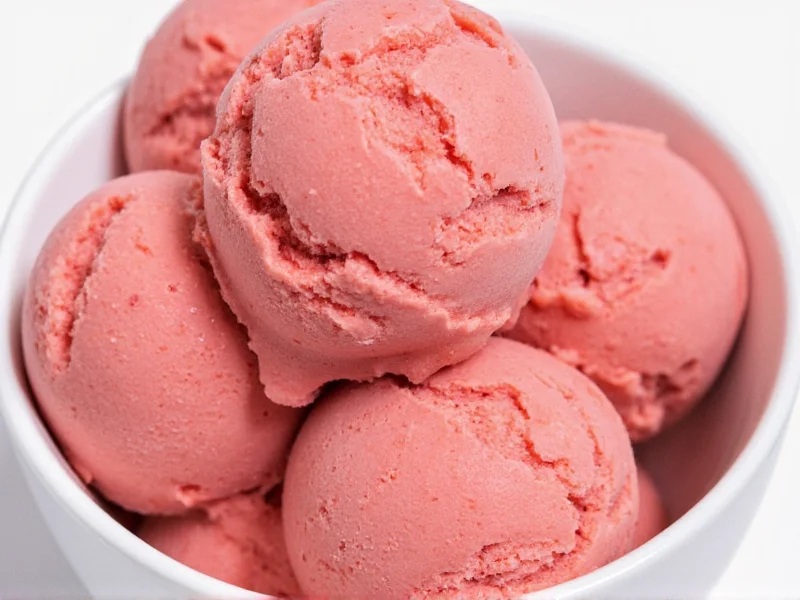Chamoy ice cream represents an innovative fusion of traditional Mexican flavors with classic frozen desserts. While Lucas is primarily known for its popular chamoy sauce rather than a specific branded ice cream product, many artisanal ice cream makers and home chefs use Lucas chamoy sauce as a key ingredient to create this distinctive frozen treat. Understanding this culinary creation requires examining both the sauce that defines it and the ice cream application.
What Exactly Is Chamoy?
Chamoy is a versatile Mexican condiment with roots tracing back to Chinese preserved fruits brought to Mexico via the Manila Galleon trade route. The traditional preparation involves pickling fruits like apricots, plums, or mangoes in a mixture of chilies, lime, and salt. Modern commercial versions, including Lucas brand chamoy, typically feature a smooth, pourable sauce with a balanced profile of sweet, sour, salty, and spicy elements.
The specific ingredients in Lucas chamoy sauce include:
| Primary Ingredients | Flavor Contribution | Traditional Significance |
|---|---|---|
| Fruit puree (typically apricot or plum) | Sweetness and fruit base | Represents the preserved fruit origins |
| Chili powder (usually árbol or de árbol) | Spicy heat | Adds the characteristic Mexican spice element |
| Vinegar or citric acid | Sour component | Preservation and tangy flavor |
| Salt | Savory balance | Enhances overall flavor complexity |
| Sugar | Sweet counterbalance | Modern adaptation for broader appeal |
How Chamoy Transforms Ice Cream
When incorporated into ice cream, chamoy creates a flavor experience unlike traditional frozen desserts. The process typically involves either swirling Lucas chamoy sauce into vanilla or cream ice cream base or infusing the sauce directly into the ice cream mixture before churning. This Mexican-inspired frozen treat has gained popularity in regions with significant Mexican-American communities, particularly in the southwestern United States.
Authentic chamoy ice cream maintains the signature flavor progression: initial sweetness from the ice cream base, followed by the tangy fruit notes, then the gradual build of chili heat, and finally the salty finish that characterizes traditional chamoy. The texture contrast between the creamy ice cream and the slightly viscous chamoy swirl creates an engaging mouthfeel that enhances the overall experience.
Cultural Context of Chamoy Flavored Ice Cream
Chamoy ice cream represents a delicious example of culinary fusion that honors Mexican flavor traditions while adapting to contemporary dessert preferences. In Mexico, chamoy is commonly used as a topping for fresh fruit, but its application in ice cream demonstrates creative adaptation of traditional flavors.
This Mexican-inspired frozen dessert has become particularly popular among younger generations who appreciate bold flavor combinations. The growing interest in authentic Mexican flavors has propelled chamoy ice cream from niche specialty to increasingly mainstream offering in diverse ice cream shops across the United States.
How to Identify Quality Chamoy Ice Cream
When seeking authentic chamoy ice cream experiences, certain characteristics distinguish high-quality versions from inferior imitations. True chamoy ice cream should feature a complex flavor profile rather than a single dominant note. The best examples balance all elements of chamoy—sweet, sour, salty, and spicy—without any one component overwhelming the others.
Look for ice cream that uses real chamoy sauce rather than artificial flavorings. Products featuring Lucas brand chamoy as an ingredient typically provide more authentic flavor than those using generic "chamoy flavor." The texture should be creamy with visible swirls of the sauce, not homogenized into a uniform color.
Where to Find Chamoy Ice Cream
While Lucas doesn't manufacture its own branded ice cream, their chamoy sauce is widely available in Mexican grocery stores and major supermarkets with international sections. Many artisanal ice cream makers use Lucas chamoy to create their signature flavors, particularly in areas with strong Mexican-American communities.
For those interested in making homemade chamoy ice cream, the process involves incorporating Lucas chamoy sauce into a standard ice cream base. The recommended ratio is approximately 1/4 cup of chamoy per quart of ice cream base, swirled in during the final minutes of churning. Some enthusiasts prefer to create a chamoy ripple by layering the sauce between scoops of plain ice cream.
Chamoy Ice Cream in Culinary Innovation
The popularity of chamoy ice cream has inspired numerous creative variations that expand on the basic concept. Some innovative interpretations include:
- Chamoy mango ice cream - Combining tropical mango with traditional chamoy flavors
- Chamoy tamarind ice cream - Adding tamarind's distinctive sourness to complement chamoy
- Chamoy ice cream with Tajín rim - Serving with the popular chili-lime seasoning on the cone
- Chamoy ice cream floats - Pairing with Mexican sodas like Jarritos for a refreshing treat
These variations demonstrate how chamoy ice cream has evolved from a simple flavor combination to a platform for culinary creativity that respects traditional Mexican flavors while appealing to contemporary palates.











 浙公网安备
33010002000092号
浙公网安备
33010002000092号 浙B2-20120091-4
浙B2-20120091-4